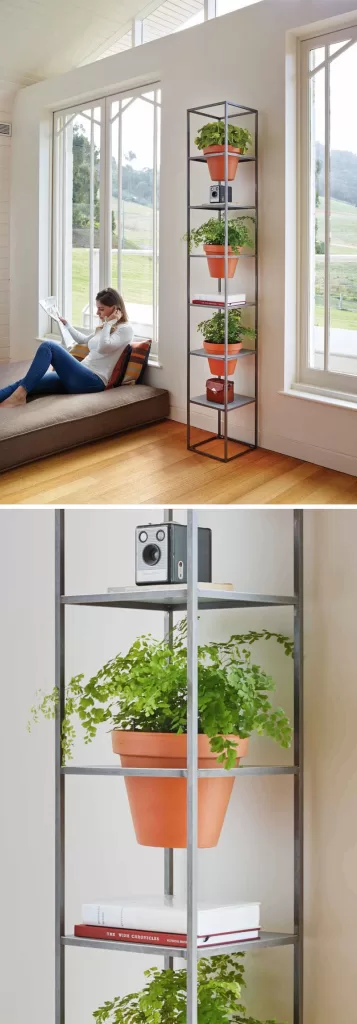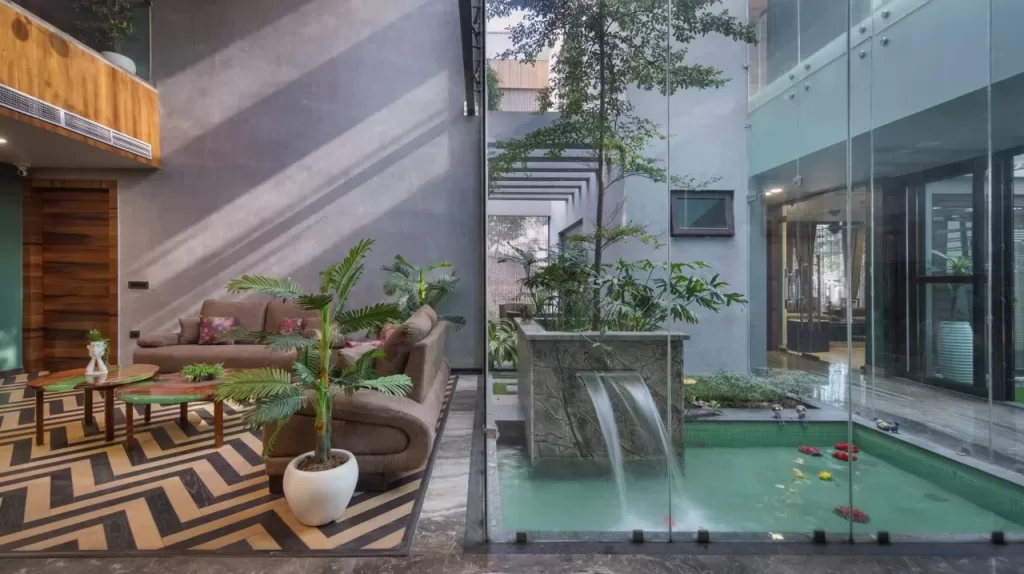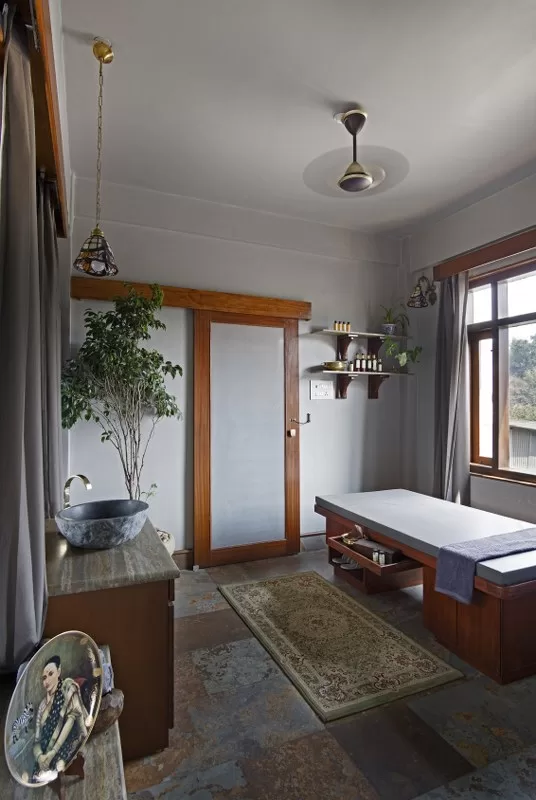15 Feb Indoor Garden Design: 16 Tips On How To Design
Indoor garden design is an art where nature seamlessly integrates with your living space to create a harmonious and vibrant environment. Crafting an indoor garden design is a creative and fulfilling endeavour that allows you to bring the outdoors inside, transforming your home into a lush sanctuary of greenery and tranquillity. Whether you have a spacious room or a compact apartment, indoor garden design opens the door to a myriad of possibilities, inviting you to tailor your botanical haven to match your personal style, preferences, and the unique conditions of your space.
1. Lighting Considerations

When designing an indoor garden, it’s crucial to assess the natural light conditions in your space, taking into account the direction and intensity of sunlight. Once you’ve identified areas and their light levels, make informed plant selections accordingly. Opt for low-light plants like pothos, snake plants, or ZZ plants for areas with limited natural light, and high-light plants such as succulents, flowering plants, or herbs for sunnier spots. To compensate for insufficient natural light, consider incorporating artificial lighting solutions like LED or fluorescent grow lights.
2. Space Assessment
Begin by measuring your indoor space meticulously, considering both dimensions and available floor and wall space. Take stock of existing furniture and other items, as their placement will play a pivotal role in determining suitable locations for your plants. With these considerations in mind, strategically plan a layout that not only maximizes visual impact but also ensures harmony with the existing elements of your interior.
3. Plant Selection

When choosing plants for your indoor garden, it’s crucial to conduct thorough research and select species that align with your specific space conditions, like light levels, temperature, and humidity within an indoor environment. Mix plants with varying heights to add dimension and interest, combining taller specimens with compact varieties. Incorporate a range of leaf shapes and colours to introduce texture and visual contrast, creating a harmonious yet dynamic display. This thoughtful curation not only enhances the aesthetic appeal of your indoor garden but also caters to the individual needs of each plant, promoting a thriving and balanced ecosystem.
4. Container Variety

Prioritize containers with drainage holes to facilitate proper water drainage, preventing waterlogged soil and potential root rot. To add a layer of visual interest, consider mixing materials such as ceramic, terracotta, and metal. The diverse textures and finishes of these materials can contribute to an aesthetically pleasing and eclectic look for your indoor garden. Furthermore, vary container sizes to accommodate the unique growth patterns of different plant types.
5. Colour Coordination

If your room features a specific colour scheme, aim for a harmonious palette by grouping plants with similar or complementary colours. This can create a unified and balanced look, contributing to a seamless integration of nature into your indoor environment. Whether you pick plants that blend subtly with the existing colour scheme or introduce pops of contrasting hues, thoughtful consideration of colour can elevate the visual impact of your indoor garden.
6. Furniture Integration

Begin by choosing planters that feature complementary styles and colours to the furniture in your space. One can achieve this by selecting containers that mirror the materials, finishes, or design elements present in your furniture. To save space, explore the possibility of incorporating built-in planters into existing furniture pieces, such as shelves or side tables. This not only optimises space utilisation but also provides a purposeful design that effortlessly fuses your indoor garden with the overall aesthetic of your room.
7. Vertical Gardening

Maximizing vertical space is a smart and visually appealing strategy for designing an indoor garden. Consider installing hanging planters, wall-mounted shelves at different heights or trellises. This three-dimensional approach adds depth and interest to your space, turning walls and ceilings into dynamic canvases for plant display. Whether you choose to showcase trailing vines, cascading plants, or a combination of various species, incorporating vertical elements contributes to an innovative and space-efficient indoor garden design.
8. Themed Gardens

Creating themed gardens by grouping plants or creating specific plant arrangements within your indoor space can bring a sense of cohesion to your design. For instance, you might curate a desert-themed succulent garden by combining various types of succulents, cacti, and desert-adapted plants. Alternatively, you could design a lush tropical corner with vibrant, large-leafed plants, ferns, and tropical flowers. This approach allows you to personalise your indoor garden, infusing it with a unique atmosphere.
9. Artistic Arrangement

Experiment with different design elements, such as asymmetry, grouping, or arranging plants in patterns, to create visually captivating displays. Embrace asymmetrical arrangements or group plants with contrasting shapes and sizes to add interest. Alternatively, create visually striking patterns or setups that draw attention to specific features. Incorporate various plant heights and textures to add depth and complexity. Using artistic expression in the selection of containers, like combining different materials, shapes, and colours, can complement your overall design.
10. Maintenance
A strategic arrangement of plants in your indoor garden is essential to facilitate easy maintenance tasks such as watering, pruning, and overall care. Place taller plants towards the back of arrangements or on elevated surfaces, ensuring that they don’t overshadow smaller plants and are still easily accessible for care. Position hanging or trailing plants at suitable heights to simplify watering and pruning tasks. Further, utilise shelves, plant stands, or tiered displays to create visual interest while ensuring that each plant is within easy reach. By organising your indoor garden with accessibility in mind, you contribute to the overall health and flourishing beauty of your plants.
11. Herb Kitchen Garden

A herb kitchen garden is a delightful addition to any culinary space, offering a convenient and sustainable source of fresh flavours right at your fingertips. Select a sunny location near a window, and choose a variety of herbs that suit your taste preferences and thrive indoors. Whether you’re using vertical planters, wall-mounted shelves, or traditional pots, a thoughtfully designed herb kitchen garden not only provides an ongoing source of culinary inspiration but also adds a touch of greenery and natural beauty to your kitchen ambiance.
12. Botanical Bookshelf

A botanical bookshelf is a unique way to integrate nature into your home decor while showcasing your love for plants and literature. To create a botanical bookshelf, arrange your favourite plant-themed books alongside potted plants and botanical elements. Incorporate a variety of planters, terrariums, or small vases to house succulents, air plants, or small foliage. Try organizing the shelves with a mix of plant-related accessories such as botanical prints, plant-themed sculptures, or decorative plant labels. This curated combination of literature and greenery transforms your bookshelf into a captivating biophillical display.
13. Indoor Pond or Water Feature

An indoor pond can serve as a focal point, creating a serene and calming atmosphere. Utilise a sturdy and waterproof container as the base for your pond, incorporating water plants such as lilies or floating greenery to enhance the natural aesthetic. Integrate small fish like goldfish and complement the pond with strategically placed rocks, pebbles, and possibly a miniature fountain for gentle water sounds. Ensure proper filtration and aeration to maintain the quality of the water.
14. Floating Plant Shelves

Floating plant shelves are an innovative and space-efficient way to display your favourite plants while adding a touch of greenery to your living space. These shelves, typically mounted on walls, provide a unique platform at different levels to create a visually dynamic display, allowing trailing plants to flow and taller plants to stand out. Ensure proper support and secure installation to accommodate the weight of the plants and soil. Floating plant shelves not only optimise vertical space but also infuse your home with a refreshing element, turning walls into living canvases.
15. Watering System
Implementing an effective watering system is crucial for maintaining a healthy and thriving indoor garden. Group plants with similar needs together to simplify watering routines. Drip irrigation systems deliver water directly to the base of each plant, which is particularly effective for potted plants. For smaller indoor gardens, traditional watering cans or watering wands provide a controlled and precise method for delivering water to the base of plants. Be mindful of indoor humidity levels, especially for plants that require higher humidity. Importantly, ensure that your plant containers have adequate drainage holes to prevent water accumulation at the bottom.
16. Seasonal Transitions
As temperatures fluctuate and daylight hours vary, consider rotating or swapping out plants to accommodate their seasonal preferences. Adjust watering routines, fertilisation schedules, and protection measures against extreme weather conditions. Engage in seasonal pruning and soil maintenance, while also addressing potential pest and disease challenges that may arise with changing conditions. By embracing a thoughtful and adaptive approach to each season, you not only ensure the health and resilience of your garden but also set the stage for ongoing growth and vibrancy.
Conclusion
Indoor garden design is not merely a collection of plants; it is a testament to your creativity, care, and connection with the living world. Through thoughtful plant selection, strategic arrangement, and attentive maintenance, you’ve cultivated an indoor garden design that not only enhances the aesthetic appeal of your living space but also nourishes your well-being. The lush greenery, the interplay of light and shadow, and the delicate symphony of nature within your home are a testament to the beauty that can be woven into everyday life.
Content Writing And Research By: Ar. Ishita Jindal
The post Indoor Garden Design: 16 Tips On How To Design appeared first on The Architects Diary.




No Comments